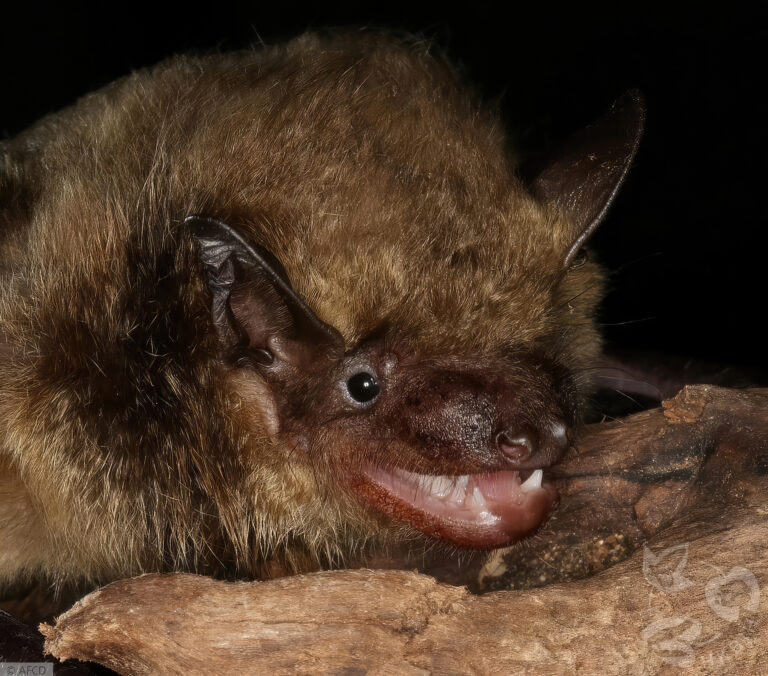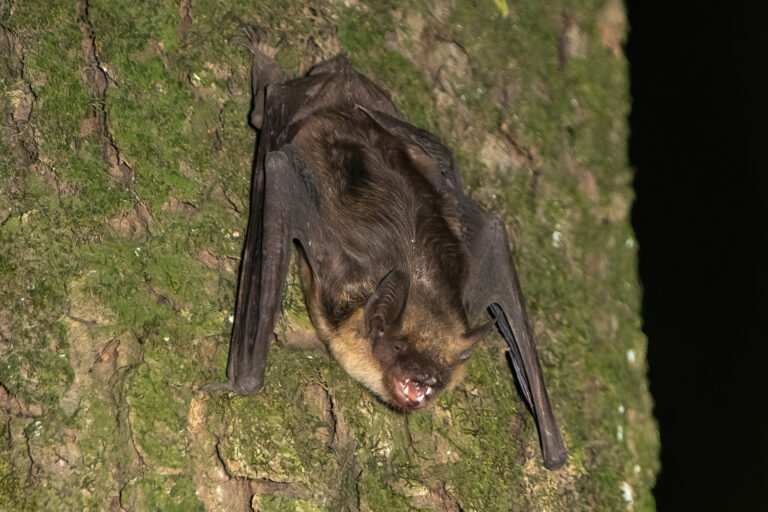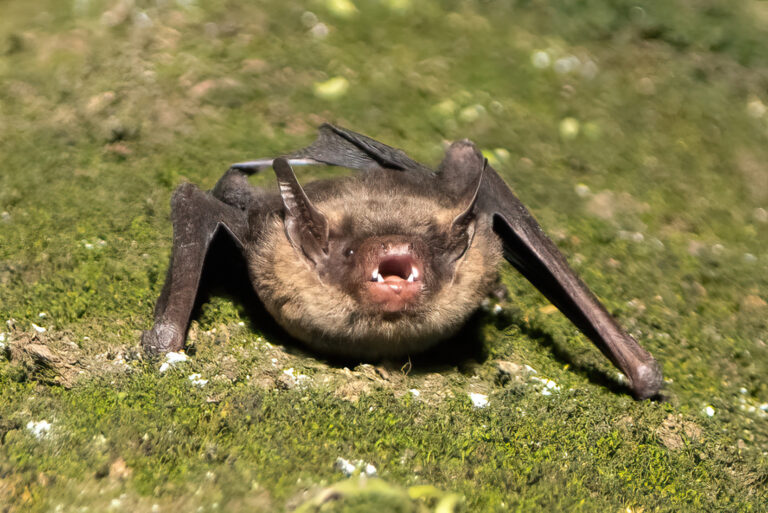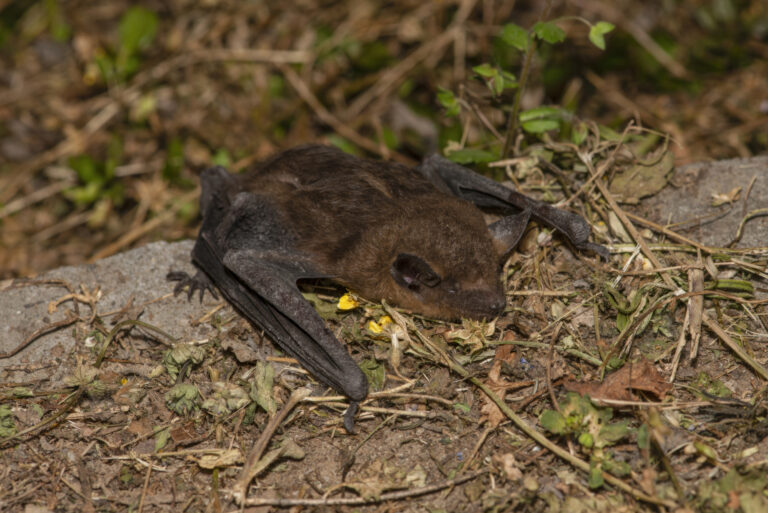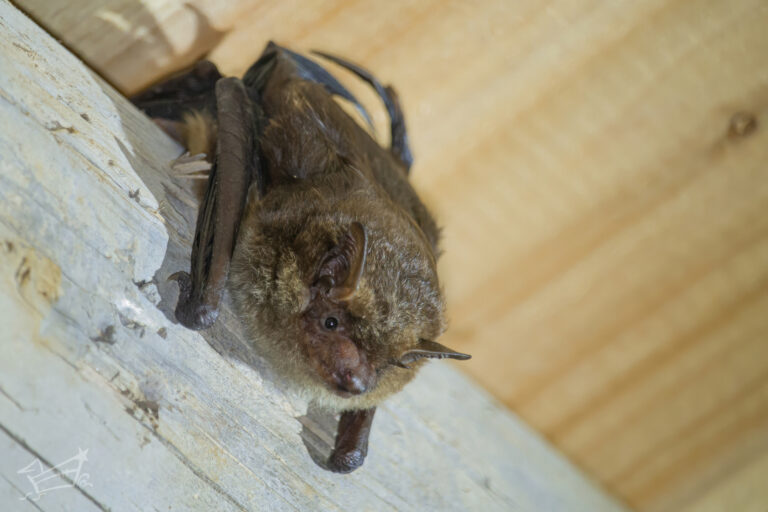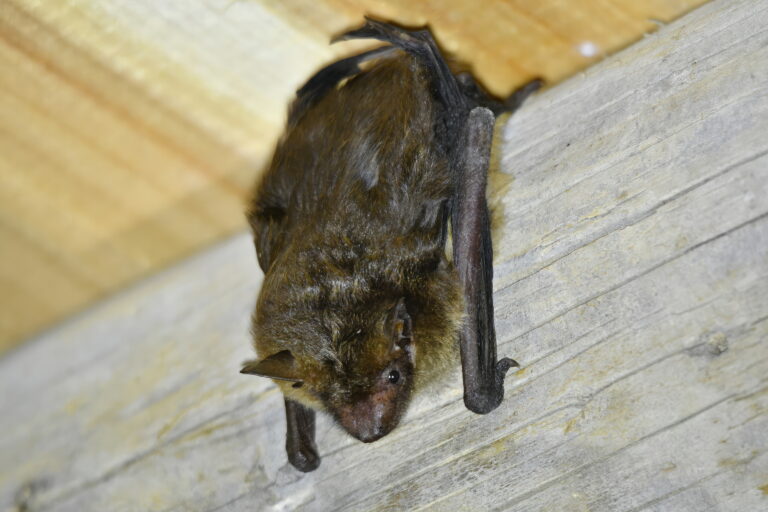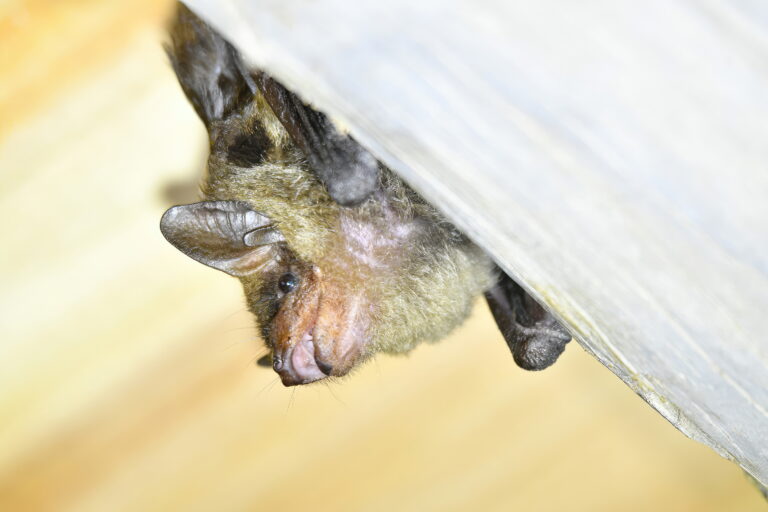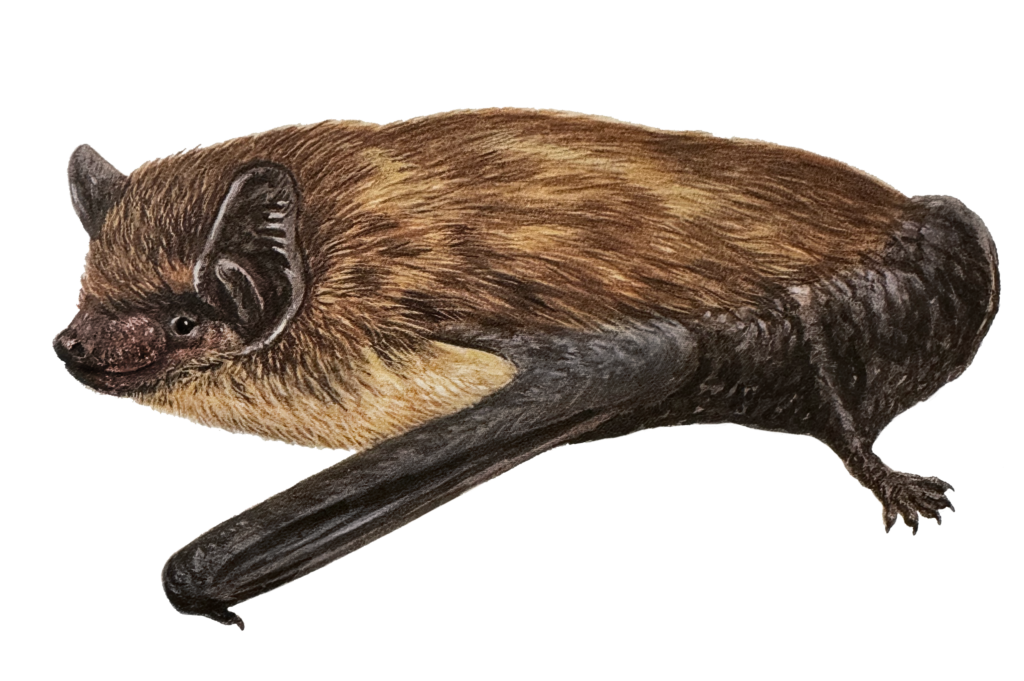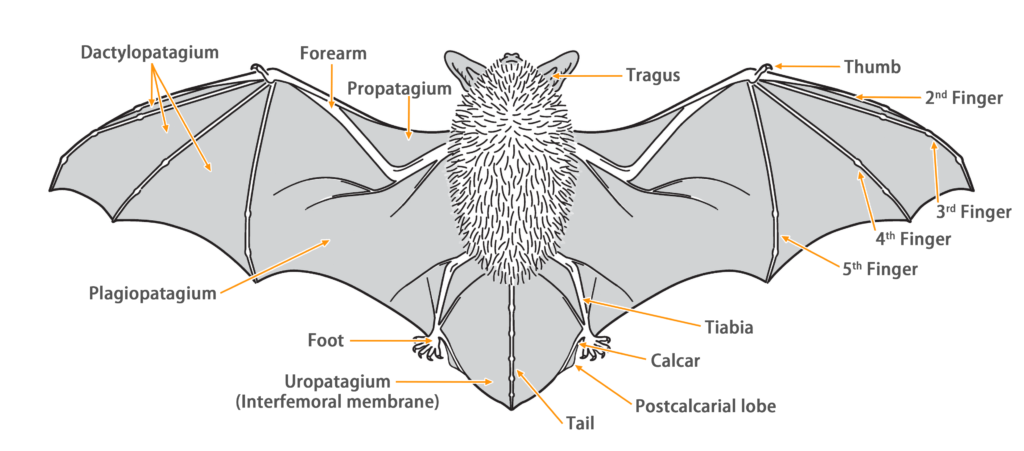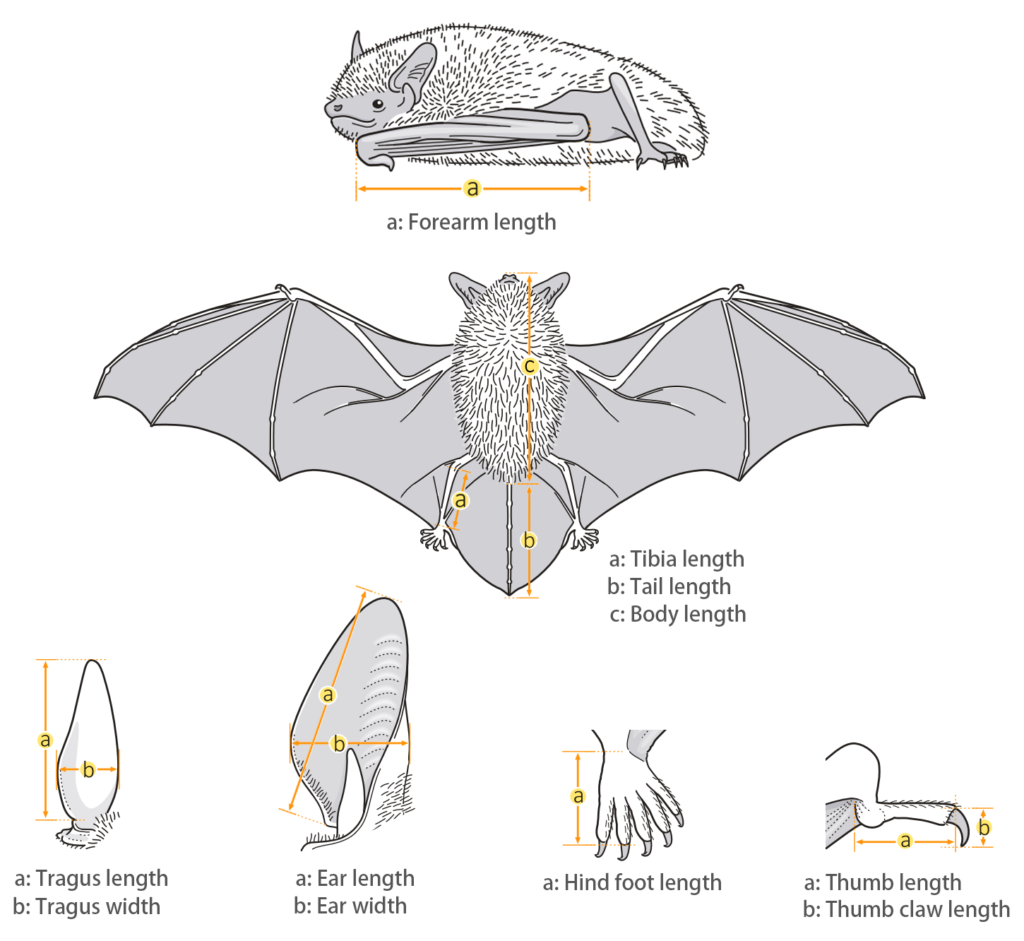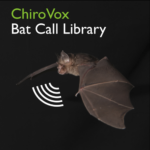- Hong Kong Bat Radar
- Oriental Serotine (Eptesicus pachyomus)
Oriental Serotine
Eptesicus pachyomus (Tomes, 1857)
Taxonomy
| Family: | Vespertilionidae |
| Genus: | Eptesicus |
| Scientific name: | Eptesicus pachyomus (Tomes, 1857) |
| Synonyms: | Eptesicus serotinus pachyomus |
| Common name: | Oriental Serotine (Wei et al., 2021) |
| Other name: | Common Serotine |
| Remark: |
E. pachyomus was previously classified as a subspecies of E. serotinus, but recent molecular genetic studies have indicated that E. pachyomus should be elevated to the status of a separate species (Juste et al., 2013). However, another nDNA analysis suggested that E. pachyomus should be retained as a subspecies of E. serotinus (Artyushin et al., 2018). While its taxonomic status is still under investigation, this website will temporarily provide an overview of E. pachyomus as an independent species.
E. pachyomus includes 4 known sub-species: E. p. pachyomus (Tomes, 1857), E. p. andersoni (Dobson, 1871), E. p. horikawai (Kishida, 1924) and E. p. pallens (G. S. Miller, 1911). According to geographic distribution, the local species is E. p. andersoni. |
| Characteristics | |
| Color: | The body fur is long, with the dorsal fur ranging from gray-brown to dark brown (base color being dark brown and tips being light brown). The ventral fur is lighter, ranging from light yellow-brown to gray-white/yellow-white. |
| Ear: | The ear pinna is oval-shaped, large, and slender, with rounded and blunt tips. Both the ear pinna and tragus are dark brown in color. The tragus is thumb-shaped, with a rounded and blunt tip, measuring approximately one-third the length of the earpinna. |
| Head: | The muzzle and facial region are dark brown in color. The sides of the snout are noticeably swollen and contain glands that secrete a brown liquid when the bat is under stress. |
| Limbs: | The wing membrane connects to the base of the hind foot. |
| Tail: | The tail is long, completely enveloped by the interfemoral membrane, with a slight protrusion (2-3 mm) at the tip of the membrane. |
| Body measurements | |
| Size: | Mediem - Large |
| Body: | 73.0 - 80.0 mm |
| Tail: | 50.0 - 60.0 mm |
| Ears: | 14.0 - 21.0 mm |
| Hind foot: | 10.0 - 14.0 mm |
| Forearm: | 49.0 - 57.0 mm |
| Weight: | 15.0 - 35.0 g |
| Wing morphology | |
| Wing span: | - |
| Wing area: | 0.016 m2 |
| Wing loading: | 15.68 N/m2 (High) |
| Aspect ratio: | 6.51 (Medium) |
| Tip-shape index: | - |
| Reference: | Luo, 2023 |
Ecology
| Habitat: | They primarily inhabit buildings such as old houses and churches. Their nests are usually located on the eaves or highest parts of the buildings, and they are less commonly found in modern structures. There are scarce records of them roosting in trees. |
| Habit: | They form small colonies and roost inside buildings. |
| Reproduction: | During the spring, pregnant female bats gather to form maternity colonies and nursery groups. They give birth to one litter per year, with one to two offspring per litter. In mainland China populations, the birthing period occurs from June to July. Based on the local climate and the breeding periods of other bats, it is inferred that the birthing period in the local area is estimated to be from May to June. |
| Hibernation: | They undergo hibernation, and the actual duration of hibernation varies with the temperature. |
| Flight: | They possesses a high flight speed but exhibits limited agility, resulting in excellent flight efficiency that is well-suited for long-distance flights. They typically engage in aerial flight within the tree canopy at an approximate altitude of 10 meters and frequently maintain close proximity to vegetation. At times, they may land on branches for brief periods. Their activity range can extend up to 6 kilometers. |
| Foraging: | They engages in aerial hunting of insects, occasionally landing on branches to capture larger prey. They are also known to hunt near streetlights and capture prey on the ground. Their hunting range is typically within a radius of 2 kilometers from their roosting site. |
| Diet: | They are insectivorous bat and mainly prey on larger insects, particularly having a preference for beetles from the family Carabidae. |
Diet composition of E. pachyomus in Iran
(Benda et al., 2012)
Distribution
| Local: | Further research is needed as there is currently limited information available. Only one record exists, where an individual was mistakenly found indoors in Wan Chai in 2014. |
| Global: | |
| E. p. pachyomus | Southeast Iran, Northeast Afghanistan, North Pakistan, extreme Southwest China (Xizang), North India (Jammu and Kashmir East to Nagaland), Nepal, and Bhutan |
| E. p. andersoni | East Myanmar, Central , South-central & Southeast China (Sichuan, Yunnan, Guizhou, Hunan, Jiangxi, Anhui, Jiangsu, Shanghai, Zhejiang, and Fujian), North Thailand, North Laos, and North Vietnam |
| E. p. pallens | South Mongolia, North-central, Northeast, Central & East China (Gansu, Nei Mongol, Heilongjiang, Jilin, Liaoning, Sichuan, Ningxia, Shaanxi, Shanxi, Hebei, Beijing, Tianjin, Shandong, Henan, Hubei, Anhui, and Jiangsu), and Korean Peninsula |
| E. p. horikawai | Taiwan (Moratelli et al., 2019) |
Local distribution map
(KFBG, 2018)
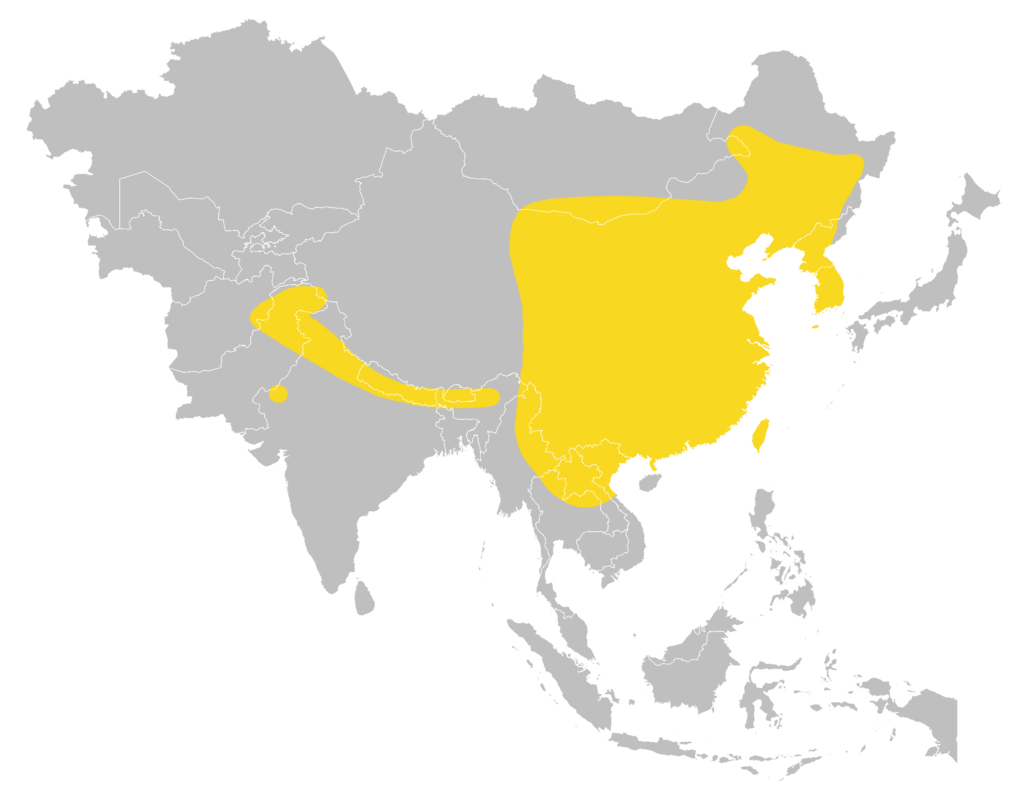
Global distribution map
(Moratelli et al., 2019)
Status and Conservation
| First record: | 2014 |
| Origin: | Native |
| Local status: | Further research is needed |
| National status: | Near Threatened (Red List of China Vertebrates) |
| Global status: | Least Concern (IUCN Red List) |
| Potential threat: | TBC |
Echolocation

| Parameter | Value |
|---|---|
| Call structure | FM |
| Duration | 3.79 ± 0.50 ms |
| Inter pulse interval | 67.13 ± 12.12 ms |
| Peak frequency | 36.75 ± 4.09 kHz |
| Start frequency | 63.89 ± 3.94 kHz |
| End frequency | 22.42 ± 1.48 kHz |
|
Subspecies: |
E. p. andersoni |
|
Region: |
China (Kunming, Yunnan) |
| Method: | Flight tent |
| Reference: | Zhu et al., 2009 |
| Parameter | Value |
|---|---|
| Call structure | FM |
| Duration | 4.53 - 6.70 ms |
| Inter pulse interval | 137.40 - 145.9 ms |
| Peak frequency | 27.83 - 32.23 kHz |
| Start frequency | 48.05 - 56.82 kHz |
| End frequency | 22.69 - 24.13 kHz |
|
Subspecies: |
E. p. pachyomus |
|
Region: |
India |
| Method: | Hand release |
| Reference: | ChiroVox - A004407 |
| Parameter | Value |
|---|---|
| Call structure | FM |
| Duration | 8.90 - 12.00 ms |
| Inter pulse interval | 111.20 - 202.40 ms |
| Peak frequency | 27.75 - 33.38 kHz |
| Highest frequency | 48.53 - 77.05 kHz |
| Lowest frequency | 24.18 - 26.78 kHz |
|
Subspecies: |
E. p. horikawai |
|
Region: |
Taiwan |
| Method: | Free flying |
| Reference: | ChiroVox - A002707 |
Bibliography
Artyushin, I. V., Kruskop, S. V., Lebedev, V. S., & Bannikova, A. A. (2018). Molecular Phylogeny of Serotines (Mammalia, Chiroptera, Eptesicus): Evolutionary and Taxonomical Aspects of the E. serotinus Species Group. Biology Bulletin, 45(5), 469-477.
Benda, P., Faizolâhi, K., Andreas, M., Obuch, J., Reiter, A., Ševčík, M., Uhrin, M., Vallo, P., & Ashrafi, S. (2012). Bats (Mammalia: Chiroptera) of the Eastern Mediterranean and Middle East. Part 10. Bat fauna of Iran. Acta Societatis Zoologicae Bohemicae, 76(1-4), 163-582.
Cheng, H. C., Fang, Y. P., & Chou, C. H. (201 5 ). A photographic guide to the bats of Taiwan (2nd ed.) Jiji: Endemic Species Research Institute Taiwan ROC.
Juste, J., Benda, P., Garcia-Mudarra, J. L., & Ibáñez, C. (2013). Phylogeny and systematics of Old World serotine bats (genus Eptesicus, Vespertilionidae, Chiroptera): an integrative approach. Zoologica Scripta, 42(5), 441-457.
Kadoorie Farm and Botanic Garden (2018). A New Locality Record for the Asian Serotine Bat, Eptesicus pachyomus. Publication Series No. 15, Kadoorie Farm & Botanic Garden, Hong Kong SAR.
Luo, P. F. (2023). Elevation distribution pattern of Chiroptera diversity in Guangdong Province [廣東省翼手多樣性的高度分佈模式].[Master’s thesis, Guizhou Normal University].
Moratelli, R., Burgin, C., Cláudio, V., Novaes, R., López-Baucells, A., & Haslauer, R. (2019). Vespertilionidae. In Mittermeier, R. A., & Wilson, D. E. (Eds.), Handbook of the Mammals of the World – Volume 9 Bats. (pp. 716-981). Lynx Edicions.
Smith, A. T., Xie, Y., Hoffmann, R. S., Lunde, D., MacKinnon, J., Wilson, D. E., & Wozencraft, W. C. (Eds.). (2010). A guide to the mammals of China. Princeton University Press.
Smith, A. T., & Y. Xie (eds.). 2013. Mammals of China. Princeton University Press.
Wei, F. W., Yang, Q. S., Wu, Y., Jiang, X. L., Liu, S. Y., Li, B. G., Yang, G., Li, M., Zhou, J., Li, S., Zhou, J., Li, S., Hu, Y. B., Ge, D. Y., Li, S., Yu, W. H., Chen, B. Y., Zhang, Z. J., Zhou, C. Q., Wu, S. B., Zhang, L., Chen Z. Z., Chen, S. D., Deng, H. Q., Jiang, T. L., Zhang, L. B., Shi, H. Y., Lu, X. L., Li, Q., Liu, Z., Cui, Y. Q., & Li, Y. C. (2021). Catalogue of mammals in China (2021). Acta Theriologica Sinica, 41(5), 487–501.
Zhu, X., Liu, Y., Shi, L. M., Ye, G. X., & Feng, J. (2009). Characteristics and Analysis of Echolocation Calls by Eptesicus serotinus andersoni. Sichuan Journal of Zoology, 28(1), 59-63.
Hong Kong Bat Radar. (01/05/2024). A Field Guide to Bats of Hong Kong: Oriental Serotine (Eptesicus pachyomus ). https://hkbatradar.com/en/eptesicus_pachyomus

